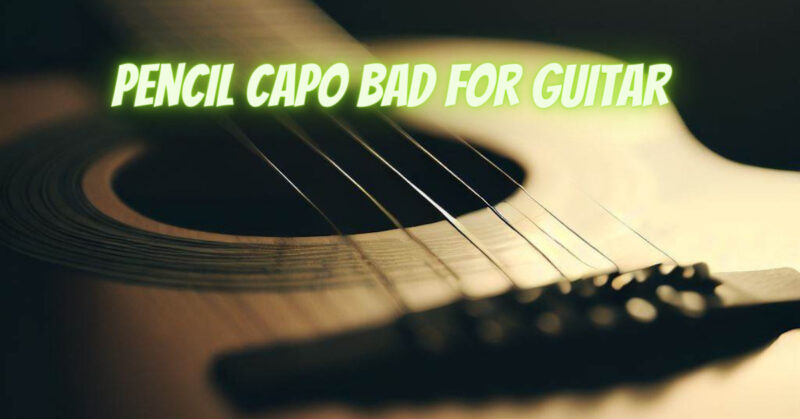A pencil capo is a makeshift solution used by guitarists to change the pitch of their instrument by shortening the playable length of the strings. While it can be a convenient alternative when a regular capo is not available, there are potential risks and drawbacks associated with using a pencil capo. In this article, we will explore the potential negative effects of using a pencil capo on your guitar.
- Scratching or Damage: One of the main concerns with using a pencil capo is the potential for scratching or damaging the guitar’s neck. Pencils, especially if they are not smooth or have sharp edges, can leave marks or indentations on the finish of the guitar. This is particularly true if the pencil capo is applied with excessive force or if the guitar’s neck is susceptible to damage.
- Intonation Issues: The use of a pencil capo may introduce intonation issues, affecting the accuracy of the instrument’s pitch. Pencils are not designed specifically for capo purposes, and their irregular shape and varying thickness may not provide uniform pressure across the strings. This can result in some strings being fretted more tightly than others, leading to pitch discrepancies and an overall compromised intonation.
- Uneven Pressure: Unlike commercial capos that are designed to exert even pressure across all strings, a pencil capo may not distribute pressure uniformly. This uneven pressure can cause certain strings to be muted or produce unwanted buzzing, affecting the overall quality of sound. The lack of control and precision with a pencil capo can lead to an inconsistent and suboptimal playing experience.
- Limited Adjustability: Pencil capos offer limited adjustability compared to regular capos. Since the pencil is typically thicker than a standard capo, it may be challenging to achieve specific fret positions or partial capo effects. This limitation can hinder the guitarist’s ability to explore different chord voicings or creative playing techniques.
- Potential for Slippage: Due to their cylindrical shape, pencils may be more prone to slipping or moving during play. This can cause the capo to lose its position or alter the desired pitch. The lack of secure clamping mechanisms found in commercial capos increases the risk of the pencil capo shifting or dislodging, leading to interruptions during performance or practice.
Conclusion:
While a pencil capo can be a temporary solution in situations where a regular capo is not available, it is important to recognize the potential drawbacks and risks associated with using it on your guitar. Scratching or damage to the guitar’s neck, intonation issues, uneven pressure, limited adjustability, and the potential for slippage are all factors to consider. If possible, it is advisable to invest in a quality commercial capo designed specifically for guitar use. These capos provide better control, precision, and protection for your instrument, ensuring a more reliable and enjoyable playing experience.


